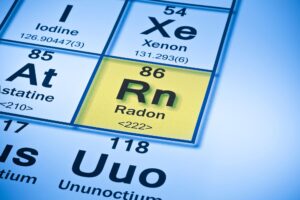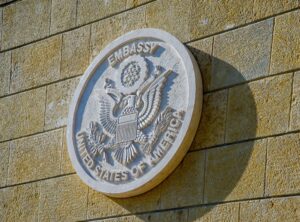Levels of nitrogen dioxide (NO2) in London have almost halved since coronavirus lockdown measures were introduced a month ago according to a new report published by the Mayor of London.
The report has been submitted to Defra’s call for evidence on air pollution and coronavirus and reveals that the lockdown is having a massive impact on emissions from road transport and aviation to construction and commercial cooking.
This is most evident on the capital’s roads, with Marylebone Road seeing a reduction in the daily average of NO2 by 48%  and Oxford Street has seen a reduction of 47%.
However, the reduction in NO2 has not been uniform throughout the day. Since March 16 roadside monitors reported an increase in hourly average NO2 between the hours of around 00:00 — 05:00, followed by a decrease during the day.
Other pollutants including ozone (O3) and particulate matter (PM2.5 and PM10) have risen over the past month, in large part due to traditional springtime agriculture emissions which can travel long distances. 
The report also includes evidence from the Breathe London air quality monitoring network which shows similar reductions in NO2 across the city.  
Alongside the coronavirus data, City Hall has also published new data showing the improvements in London’s air quality across the capital since 2017. 
The report reveals that the introduction of policies including the Ultra-Low Emission Zone (ULEZ) have contributed to a reduction of 44% in roadside NO2 in the central London ULEZ zone
Even before the lockdown, January saw 44,100 fewer polluting vehicles being driven in the central zone every day with 79% of vehicles in the zone now meeting the ULEZ emissions standards — up from 39% in February 2017.
The ULEZ is currently suspended to support key workers during the pandemic.
The Mayor of London, Sadiq Khan, said: ’London has one of the most advanced air quality monitoring networks in the world, which has recorded how the coronavirus lockdown has dramatically improved air quality in London. But this cleaner air should not just be temporary, as Londoners deserve clean air at all times.
‘So once the current emergency has passed and we start to recover, our challenge will be to eradicate air pollution permanently and ensure the gains we’ve made through policies such as ULEZ continue. It is critical that government keeps this in mind as part of the country’s recovery from the pandemic.’
King’s College London air pollution scientist, Dr Gary Fuller, said: ‘Breathing bad air has had an intolerable impact of Londoner’s health for far too long. In our operations centre at King’s, we have been measuring London’s air pollution for nearly 30 years.
‘During this time we’ve seen deteriorations followed by a long period when some places showed slow improvement, and others slowly worsened. For years it felt like we were at a standstill.
‘But, even before the Covid lockdown, London’s air pollution was undergoing a dramatic change for the better. Nitrogen dioxide in central London and along main bus routes was improving at some of the fastest rates we’ve ever measured.
We need to remember these lessons going forward. These successes show that our city’s air pollution is not an intractable problem and that actions can bring results.’
Photo Credit – Pixabay













Leave a Reply